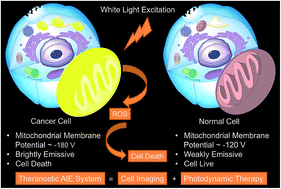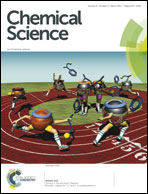AIE-active theranostic system: selective staining and killing of cancer cells†
Abstract
Cancer is the leading cause of death worldwide. With the advantages of low cost, high sensitivity and ease of accessibility, fluorescence imaging has been widely used for cancer detection in the scientific field. Aggregation-induced emission luminogens (AIEgens) are a class of synthesized fluorescent probes with high brightness and photostability in the aggregate state. Herein, a new positively-charged AIEgen, abbreviated as TPE-IQ-2O, is designed and characterized. TPE-IQ-2O not only can distinguish cancer cells from normal cells with high contrast with the aid of the difference in mitochondrial membrane potential as well as the quantity of mitochondria, but it also works as a promising photosensitizer to kill cancer cells through generation of reactive oxygen species upon white light irradiation, thus making it a promising AIE theranostic system.

- This article is part of the themed collections: 20th Anniversary of Aggregation-Induced Emission, Editors’ Choice Collection and Most downloaded articles of 2017: Analytical, Biological and Medicinal Chemistry


 Please wait while we load your content...
Please wait while we load your content...